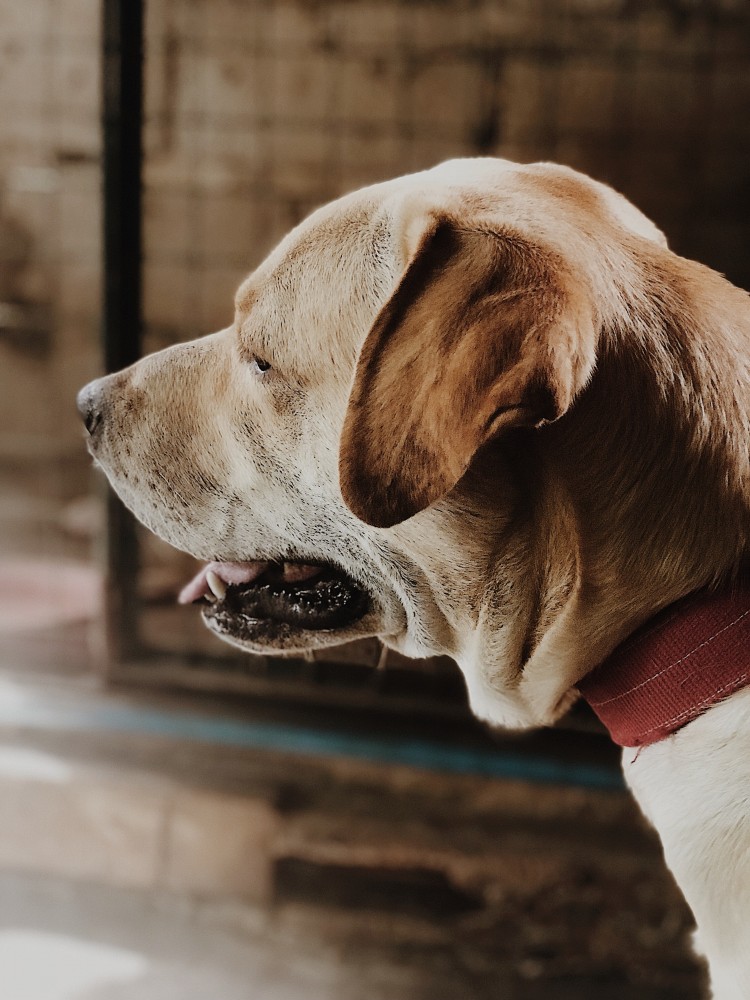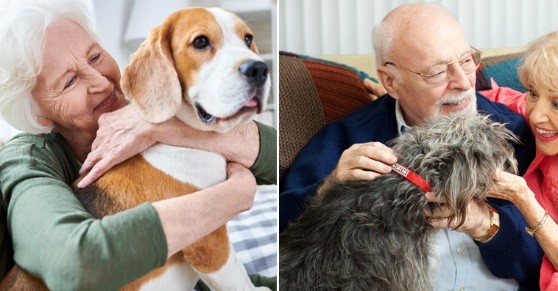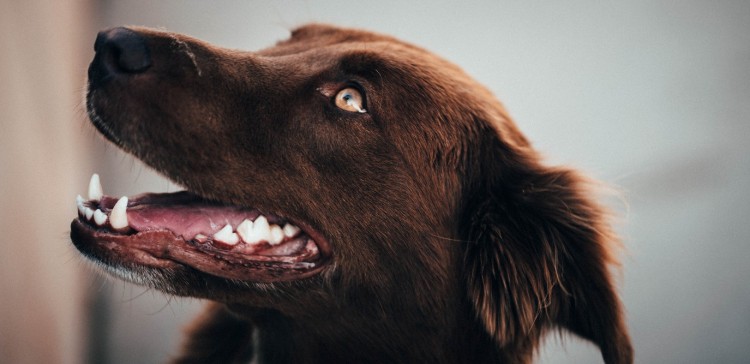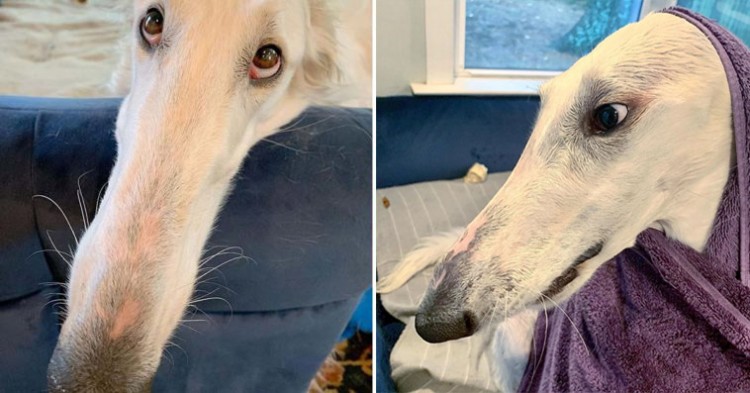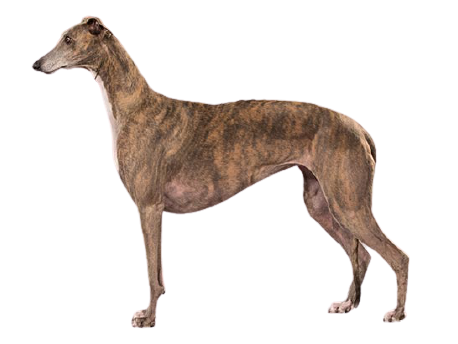
Greyhound
USD $500-$800 Price Avg.
Hunting Dogs
Group
Purebred
Breed Type
Giant
Size
10-13 years
Lifespan
Breed Information
| Group | Hunting Dogs |
|---|---|
| Popularity/Rank | 156 |
| Origin | United Kingdom |
| Other Names | English Greyhound |
| Breed Type | Purebred |
| Price (Avg.) |
USD $500-$800
How much does a Greyhound cost? According to a rough estimate, you will spend between $500 to $800 on your Greyhound if you purchase it from a reputable breeder. If you select a dog with exceptional bloodlines, the price may be higher. The price might even be higher if the dog has already been trained. You'll usually pay less if you get a Greyhound from a shelter. |
| Size | Giant |
| Weight |
Male: 65-80 pounds (29-36 kg),
Female: 60-70 pounds (27-31 kg) |
| Height |
Male: 28-30 inches (71-76 cm),
Female: 27-28 inches (68-71 cm) |
| Lifespan | 10-13 years |
| Recognized by |
AKC, FCI
The American Kennel Club in 1885 as a Hound breed. And FCI in the Sighthounds group, in the Short-haired Sighthounds section. |
| Purpose | Coursing, Hunting |
| Date of Origin | Ancient Times |
| Ancestry | Arabian Sloughi |
Appearance & Maintenance
| Coat | Fine |
|---|---|
| Coat Colors | Black, Blue, Gray, Red, White |
| Grooming Level | |
| Shedding Level | |
| Eye Color Possibilities | Brown |
| Nose Color Possibilities | Black |
| Coat Color Possibilities | Black, Blue, Brindle, Cream, Fawn, Gray, Pied, Red, Silver, White |
| Coat Length | Small |
| Coat Density | Normal |
| Coat Texture | Straight |
| Recommended Brushes | Deshedder, Nail Clipper, Pin Brush, Slicker Brush |
| Brushing Frequency | Daily |
Breed Characteristics
| Temperament | Affectionate, Athletic, Caring, Delicate, Gentle, Intelligent, Outright, Peaceful, Quiet, Tempered |
|---|---|
| Intelligent | |
| Trainability | |
| Playfulness | |
| Sensitivity Level | |
| Affection Level | |
| Social Interaction Required | |
| Barking | |
| Watchdog Ability | |
| Territorial | |
| Biting Force | Low |
| Mouthiness | |
| Impulse to Wander or Roam | |
| Prey Drive | |
| Adaptability | |
| Tolerates Being Left Alone | |
| Fighting Dog | Not really |
Good & Friendly with
| Apartment Life Friendly | |
|---|---|
| Stranger Friendly | |
| Kid-Friendly | |
| Cat Friendly | |
| Dog Friendly | |
| Office Friendly | No |
| Senior Citizens Friendly | |
| Pet Friendly | |
| Friendly with First Time Owners | No |
| Service Dog | Not really |
| Therapy Dog | Yes |
| Detection, Sniffer or Security Dog | Not really |
| Search and Rescue Dog (SAR) | Not really |
| Boat Dog | Not really |
| Cart Pulling or Drafting Dog | Not really |
Health Elements
| Health Issues | |
|---|---|
| Health Problems | Allergies, Alopecia, Bloat, Cancer, Cataracts, Cold Intolerance, Heart Murmurs, Hip Dysplasia, Hypothyroidism, Musculoskeletal Injuries, Osteoarthritis, Osteosarcoma, Pannus, Progressive reti |
| Hypoallergenic | No |
| Energy Level | |
| Exercise Required | |
| Sleeping Required | |
| Weight Gain Potential | |
| Weather & Climate | Prefers average to warm weather conditions |
| Stinkiness | Medium |
| Drooling tendency | |
| Activity Level | Moderate |
| Rec. Walk Mileage Per Week | 15 miles |
| Minutes of Activity Per Day | 60 minutes |
Food & Costing
| Avg. Daily Food | Males: 2.5 to 4 cups; Females: 1.5 to 3 cups of high-quality dry food a day, divided into two meals. |
|---|---|
| Cups Per Day | 3 cups |
| Daily Cost | $2.00 - $2.25 |
| Monthly Cost | $60.00 - $67.50 |
Reproducibility
| Gestation Duration | 60-64 days |
|---|---|
| How often can the Greyhound have a litter? | Once a year. |
| Litter Size | 1-12 puppies (Once a year.) |
Description
The Greyhound is a breed of dog that is known for its sleek and elegant appearance. They are tall, slender dogs with long legs and a deep chest. Their coats can be short or long, but they are usually smooth and glossy. The most common colors for Greyhounds are black, white, fawn, red, blue, brindle and grey.
The average lifespan of a Greyhound is between 10-13 years. They typically weigh between 50-70 pounds and stand at an average height of 28-30 inches tall at the shoulder.
Greyhounds have a gentle personality that makes them great family pets. They are loyal to their owners and enjoy spending time with them. They tend to be quiet dogs who don’t bark much unless there is something important to alert their owners about.
Greyhounds get along well with other dogs as well as cats and other animals if they are properly socialized from an early age. They can also be friendly towards children if they have been raised around them since puppyhood; however, due to their size it’s important to supervise any interactions between children and Greyhounds just in case things get too rough or out of hand.
The temperament of the Greyhound is generally calm but active when necessary; they love going on walks or runs but also enjoy lounging around the house when given the chance!
In terms of health issues, Greyhounds may suffer from hip dysplasia or eye problems such as cataracts or glaucoma; however these conditions can usually be managed with proper care from your veterinarian if caught early enough.
Greyhounds have a high level of adaptability which makes them great pets for people who move frequently or live in apartments since they don’t require much space to run around in order to stay healthy and happy! The benefits of having a Greyhound as a pet include their loyalty towards their owners as well as their low maintenance needs; all you need to do is provide them with regular exercise (walks/runs) along with plenty of love!
History
The Greyhound is a breed of dog that has been around for centuries. The breed is most likely of British origin, although there is some evidence that the Greyhound may have originated in Egypt. The Greyhound was once a very popular breed of dog, but their popularity declined in the 20th century and the breed almost became extinct. However, the Greyhound has made a comeback in recent years and is now one of the most popular breeds of dogs.
The Greyhound is a large breed of dog that can reach speeds of up to 45 miles per hour. The breed is known for its slender build and long legs. The Greyhound's coat is short and smooth, and can be any color. The most common colors are black, white, brindle, and fawn.
The Greyhound's ancestors are thought to be the ancient Egyptian sighthounds. These dogs were used for hunting by the Egyptians, and they were also revered as gods. The Roman Empire also had a type of sighthound that was used for hunting. These dogs were brought to Britain by the Romans, and they eventually became known as "Greyhounds".
The first recorded use of the word "Greyhound" was in England in the year 1000. At this time, the Greyhound was used primarily for hunting deer and other large game animals. In 1275, King Edward I decreed that only noblemen could own Greyhounds. This law helped to keep the breed from becoming too common.
During the Middle Ages, racing became a popular sport in England, and Greyhounds were often used in races. In 1576, Queen Elizabeth I granted a charter to racing clubs which helped to make racing more organized and regulated. By this time, there were two types of racing: coursing (chasing live prey) and track racing (racing against other dogs). Coursing was more popular with the nobility while track racing was more popular with commoners.
In 1876, coursing was banned in England due to concerns about animal welfare. This led to a decline in popularity for theGreyhound breed since coursing was their primary purpose at this time. However, track racing continued to grow in popularity and soon became the primary form of racing forGreyhounds in England as well as other countries such as Ireland and Australia.
The first greyhound track race in America was held at Emeryville Racetrack near San Francisco in 1919. Racing quickly spread across America during the 1920s due to its popularity with both bettors and spectators alike. By 1926 there were over 3 million people attending greyhound races each year in America alone!
During World War II, many American racetracks closed due to gas rationing which made it difficult for people to travel long distances to attend races. This led to a decline in popularity for greyhound racing which lasted until 1971 when Florida legalized gambling on live greyhound races which helped revive interest in the sport nationwide




